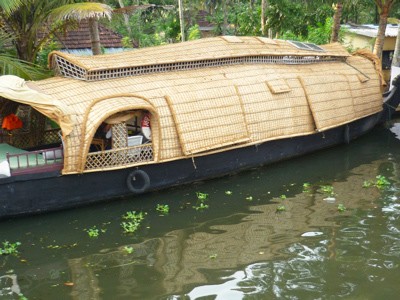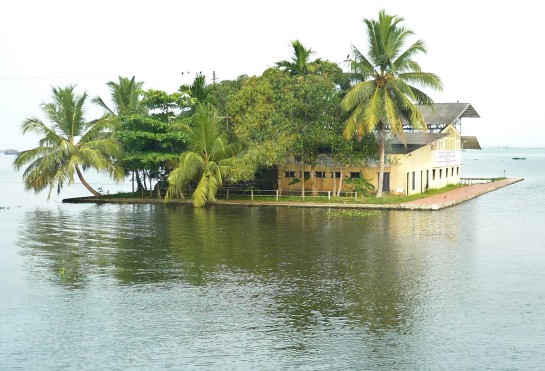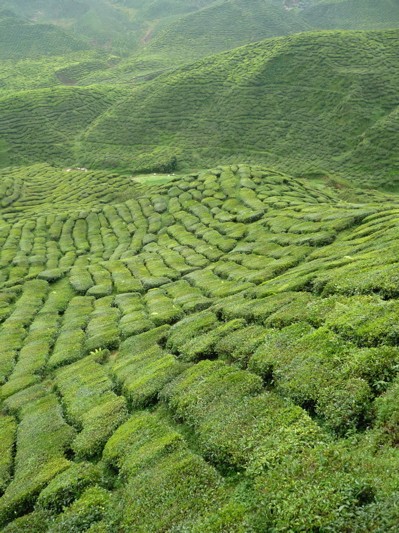Crikey reader Venise Alstergren writes: After two years of legal hell, I took my neuroses to Kerala in south west India and climbed aboard a converted rice barge to meander along The Backwaters.
Kerala is unique in that it was the first state in the world to democratically elect a communist government back in 1957. And it still regularly returns one to power. The most literate state of India, Kerala has excellent creds with healthcare, education, and literacy — with rates currently at 91% for men and 88% for women. What it lacks is a lot of business capital invested in it. My natural cynicism leads me to wonder if Big Business is wary of such a politicised workforce?
What with coconut palms, laughter from passing boats, and too many water hyacinth plants, this beautiful place was so hypnotic that I had an early night and woke up three days later.
On the evening of the third day, friends who had a few local government bodies on their guest list had invited me to drinks. Soon I found myself cornered by a man who had the words public servant coming out his ears.
“The reason we’d had success with The Backwaters was due to the never-ending trouble up North.” He intoned. “The central Government had been…” He hesitated.
“Appalled?” I ventured.
“Dismayed. Because of the decline in tourists wanting houseboats in Kashmir, we’d sought an alternative location and found it in Kerala. We converted rice barges into houseboats, and spent a great deal of money controlling the water hyacinths. The tourists came, and the beautiful people of Bollywood couldn’t survive a drinks’ party without mentioning their latest floating toy.” He was warming to his theme.
Gently, I cut in. “Minister, who transports the rice now that all the rice barges have been decommissioned?” I felt guilty for guessing the answer. “It now goes by road?”
He looked depressed, “Quite so.”
India’s roads are crowded and the seemingly burqa-clad road trucks are the worst offenders. When these lumbering vehicles converge on a city they turn blue sky into a lingering grey fog. To have turned the cargos off transportation via the hundreds of converted rice barges and instead onto these roads seemed like criminal insanity. I refrained from saying so.
Leaving Kerala’s problems behind me I flew to Nagpur, one of the settings off points to Central India’s tiger reserves. This was the beginning of a seven-hour trek across the state of Madhya Pradesh. India’s roads are India; in a way that Australia’s roads so seldom seem to reflect Australia.
These roads don’t detour villages; they include the villages. They are flat when going through hundreds of dry rice fields — it was the Northern Hemisphere winter — or they can suddenly turn in on themselves providing sharp corners where gangs of monkeys wait for cars to slow down, to demand food. Assorted animals lie wherever the mood takes them. Frequently it takes them into a dual lane highway. It’s pointless sounding the horn, as, asleep, or otherwise, they will ignore the cars and transports forced to swing around them.
[WARNING: Once clear of big towns the chances of finding a lavatory are zilch, so for the squeamish I’d suggest practising in the middle of the day somewhere public: Burke Rd, Kew, or any other major suburban main street, would be one recommendation. Once you can survive that, India will be a doodle. Also beware of rice fields. I was walking towards one when a bloody great cobra hove into view. Animal loving me felt I had an ice shard hitting my heart.]
Hours passed and the dusty plains became teak trees and sal trees. Once through the Reserve’s buffer zone, some jerry built hotels delineated the last of civilisation before arriving at the Pench Tiger Reserve. There are far more than just the tigers, (although the sight of one will remain with you for life) Leopards, shy and not visible, deer, pythons, jackals, and, of all things, to see peacocks in their natural surroundings. These brilliantly coloured screech-owls just vanish in the undergrowth. Bird life is abundant.
Early one morning, in Kanha National Park, I saw a scene from pre-history. Passing through the mist was a bull Guar, (the world’s largest cattle) which stood six feet at the shoulder and had a black hump. It was moving to its winter quarters. And as with many of the animals, he was alone. Perhaps his herd had already been through?
Three months later, and back in Oz, the dominant images are the tigress walking down the road towards me; ditto the giant Guar moving through the morning mists.
Did I take photos of either of these moments? No, I was too much in awe of the subject matter.










Crikey is committed to hosting lively discussions. Help us keep the conversation useful, interesting and welcoming. We aim to publish comments quickly in the interest of promoting robust conversation, but we’re a small team and we deploy filters to protect against legal risk. Occasionally your comment may be held up while we review, but we’re working as fast as we can to keep the conversation rolling.
The Crikey comment section is members-only content. Please subscribe to leave a comment.
The Crikey comment section is members-only content. Please login to leave a comment.